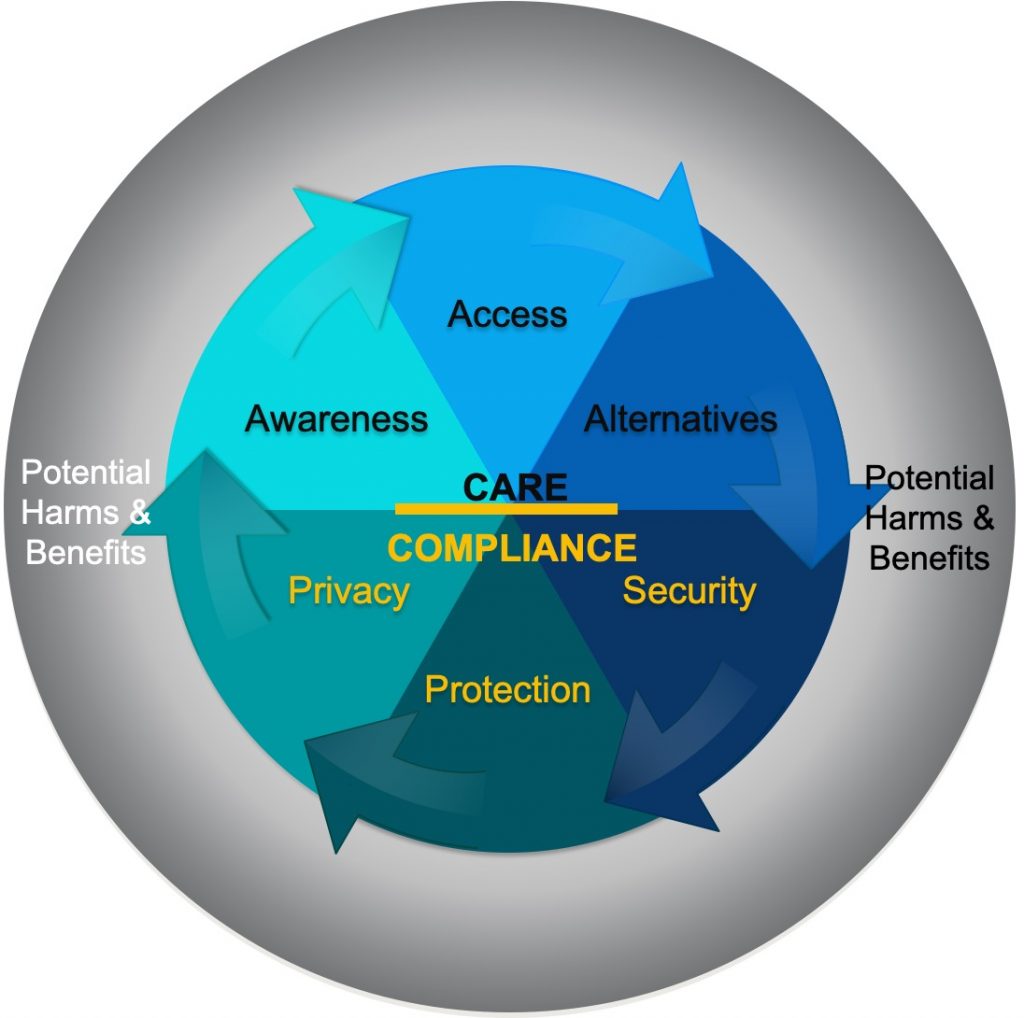“Are you following the letter of the law or the spirit?” My Dad asked me this question in many different ways growing up. It always gave me pause to think. Many business owners talk about this in a different way when discussing customer service – ‘do we do the minimum or are we generous?’
Unfortunately the culture of many large organisations is one of compliance. In the humanitarian space, this translates into ‘what does the donor require of us? What are we legally obliged to do? And what are our audit requirements?’ When dealing with data and technology, this translate to security, protection and privacy. Domains of our IT information and security teams and legal teams. Sometimes called our ‘Cover our A** (Behind)’ strategy.
In 2020, any technology we use and data we collect should meet security, protection and privacy standards. And every organisation should have policies on these. This is basic and fundamental. I’d go as far as saying that if we don’t have these policies in place and don’t follow globally recognised standards, we’re complicit in causing harm to the people we seek to serve.
But this is 2020, we need to move beyond compliance to care. Care includes security, protection and privacy, but also awareness, access, and alternatives. The diagram below is a simple attempt to visualise this.

Care pushes us to improve the awareness of those we seek to serve about digital – why we need their data, how we use it, etc. and how they can use it, act wisely, etc. Essentially awareness plays a role in a person’s digital literacy. Access is about not hoarding the data so the person about whom the data is can not access it. It’s about enabling them to use the data we collect about them in other areas of their lives without our involvement. And alternatives is about choice – giving people the choice to say no to being digitally registered, tracked, measured, etc. but still able to access the aid and services we provide.
And this model of care sits within the context of potential harms and benefits. These potential harms and benefits are rarely black and white, they involve trade offs and a thousand shades of grey. And perhaps thinking about all six elements helps us navigate the grey.
The care model helps move us beyond minimum customer service and the letter of the law and towards a more generous society. For some it maybe helpful to see it as a duty of care, which may help a change process. But duty is close to compliance. What if we go beyond duty and see it as an opportunity, as something we get to do. As something we have the privilege of doing. That feels more generous. And it is true.

0 Comments